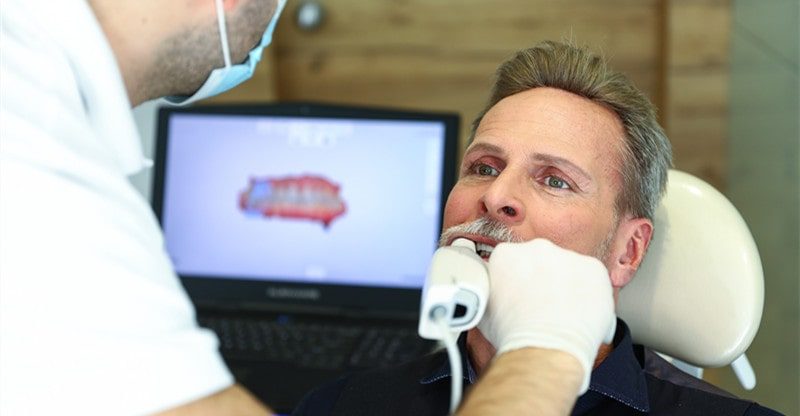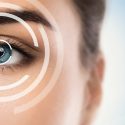8 Reasons To Visit A Digital Dental Clinic
Like many other industries, dentistry has essentially gone digital. While a dentist still does the usual cleanings and evaluations, accessible technologies enable these experts to understand your dental health and requirements better. Optimizing the dental profession allows individuals to get maximum treatment for their teeth and gums.
With digital dentistry, a patient entering a dental clinic in the 21st century will no longer suffer due to sharp dental tools or have to keep their mouth open for what seems like forever. Thanks to advances in digital dentistry, visits to your dentist are quicker, safer, more pleasant and more dependable than ever before.
What Is Digital Dentistry?
Digital dentistry involves performing certain operations using dental technology or equipment that includes digital or computer-controlled components rather than mechanical or electrical instruments. It can make dental treatments more efficient than those performed with mechanical tools, both restorative and diagnostic. It’s used to expedite dental procedures and suggest innovative methods to satisfy growing patient needs according to this dentist in Ballantyne.
By removing the inefficiencies inherent in the outdated system, digital dentistry can keep even more dentists and their patients happy with the custom solutions that come with investing in state-of-the-art technology. In digital dentistry, new gadgets are used by the dentist’s office. These allow for 3D teeth, jaws, neck, and facial imagery. Digital dentistry covers a wide variety of procedures such as:
• Shade matching
• Patient record management
• Photography (extraoral and intraoral)
• Occlusion and temporomandibular joint analysis/diagnosis
• Lasers
• Caries diagnosis
• Digital radiography (including cone-beam computed tomography or CBCT)
• Computer-aided implants
• CAD/CAM and intraoral imaging
The transition to the digital age is an unstoppable worldwide trend. With rapid advancements in technology, digital dentistry will only grow more efficient and user-friendly, enabling dental practitioners to work even more intelligently than ever before. To learn more about it, you can visit websites like thevillagedentalcenter.com.
As for patients, here are the top reasons visiting a digital clinic would enhance your dental health:
1. Less Waiting Time
The dentist can see more patients owing to the precision of their equipment. Complicated treatments that used to take two or three visits can be done in one visit. The dental office’s computerization has almost eliminated paper charts, making it easier to schedule visits and review patient records.
Non-emergency appointments may be made 24 hours a day through the dentist’s website, which means no more postponing dental visits.
Another benefit to using digital technology is speed. Whether it’s scanning or transmitting data, digital means are quicker than conventional methods. Scanners may scan at varying rates but typically take only 12–24 seconds every time. After scanning, transmitting the data is simple and doesn’t need to be in physical form. The time saved is worth visiting a digital dental clinic.
2. Generate 3D X-Ray Pictures
The X-rays produced using digital dental equipment can be manipulated with special software to generate 3D pictures. This enables the dentist to view virtually any angle of the teeth and surrounding bones of a person. The benefit of this technology is that your dentist receives a much superior picture, leading to more excellent diagnostic capability and quicker treatment.
Your dentist’s diagnosis is more accurate, and your treatment with the assistance of 3D X-rays may be more exact. You may rotate or zoom in on the picture.
As a patient, your nervousness may lessen if you can view the picture of a root fracture or any dental condition you may gave while discussing the recommended therapy with your dentist. You’ll be more assured because you know what your dentist is talking about.
3. Reduced Dental Phobia
Dental anxiety affects the majority of dental patients to such an extent that they’re unable to approach any sort of dental facility. Fears of pain, loss of control, or embarrassment often profoundly enter their psyches, and they frequently struggle to overcome those.
Dental anxiety continues to be a common problem despite progress in dental technology and dental pain management. However, a digital dental clinic that frequently utilizes digital tools and developments provides superior services to its customers by reducing discomfort. Doing so also lessens treatment times and reduces visits. The use of different technologies, such as CAM/CAD, makes patient consultation easy and comfortable.
Digital dentistry plays a significant role in providing a feeling of control for the patients in collaboration with dentists. It also raises awareness about the need to build a strong connection with the dentist.
4. Minimal Exposure To X-Ray Radiation
Digital X-ray is one of the most significant new developments in the dental field in a long time. The potential to minimize patients’ exposure to radiation while improving diagnostic skills has stunning consequences. Radiation levels are lowered by up to 70% when compared to conventional X-ray equipment.
According to research, repeated X-ray exposure may lead to health issues, including head and neck cancers and systemic disorders. Reduced radiation exposure helps mitigate the possible adverse effects and long-term risks associated with X-rays.
5. Visual Diagnosis
A dentist may identify problems by using an intraoral camera to examine the oral cavity without having the patient’s mouth open for a few hours. This amazing development has made dentist visits more accessible and convenient for patients.
The dentist can explain any problems or concerns while you’re looking at the intraoral images. This will help you understand the importance of seeking out treatment and motivate you to take action at once.
This is particularly useful for individuals who struggle to deal with their dental problems at the soonest possible time. As many parents know, it’s a battle to encourage their teenagers to brush their teeth and floss daily. Suppose adolescents (or anyone else, for that matter) sees what the symptoms of gum disease and decay look like. In that case, they may be more motivated to maintain their oral hygiene.
Lastly, oral cancer screening techniques such as fluorescence imaging enable dental practitioners to detect abnormalities and indications of malignancy that are otherwise undetectable. When illnesses are detected early using those methods, they may be treated more effectively, resulting in a better prognosis and a faster recovery period for the patient.
6. Easy Access To Electronic Dental Records
Dental records contain charts and information regarding a particular patient’s teeth. They’re comparable to medical records kept at your physician’s office, and they benefit both the patient and the dentist in various ways.
Not long ago, dental records were kept entirely in tangible form in file cabinets. A combination of technological advancements and government regulation has prompted dental clinics across to upgrade their systems. This has facilitated scheduling, allowed for your dental professional’s access to records when needed, streamlined various processes, and eased the exchange of patient information across offices when required.
The advantage of computerized dentistry records is that they may be transferred from one clinic to another with ease. If you relocate, you attend college, or your dentist retires and you need to find a new clinic, your previous dental office may simply transfer your data to your new dentist. Rather than beginning from scratch, the dental expert will be able to review your records and determine how to care for your teeth.
Also, digital radiography is more efficient than its conventional counterpart. The pictures produced are instantly visible on the computer screen. The data are kept on a server or in the cloud, and the images may be quickly shared with experts through an internet connection if required.
You may request one if you need a printed copy of your digital X-rays for personal storage or sharing. Additionally, those pictures may be sent electronically to insurance firms for the sake of expediting the process for specific insurance claims.
7. Environmental Friendliness
As it turns out, many of the cutting-edge advances in dental technology are also healthier for patients and the environment. Because no chemicals are needed for film processing, digital X-rays don’t contribute to pollution. Digital images may be captured without the use of harmful substances. High-tech advancements are critical in helping dental practitioners meet their waste reduction and resource conservation goals.
8. Lower Dental Costs
The primary reason so many people avoid the dentist is the cost of treatments. Fortunately, digital dentistry can help reduce dental fees. This is due to the efficiency and speed at which the patient is diagnosed and treated.
With the use of cutting-edge in-office computer-aided design or CAD and computer-aided manufacturing or CAM technology, a digital dental clinic is essentially a one-stop shop for anything related to the mouth, teeth, and gums.
The precise cost reductions associated with switching to digital methods and tools vary per practice. For instance, the savings can be substantial if the clinic takes many dental impressions each week. Because those are digital imprints, there’s no wasting of impression materials, single-use plastic containers, and shipping materials.
What’s more, the impressions don’t have to be physically sent to a laboratory, so there are no shipping fees, either.
Conclusion
Digital dental technologies provide early detection, preventative treatments, and education. They’re especially ideal for patients dedicated to long-term oral health and avoiding invasive or costly procedures.
The general advantage of visiting a digital dental clinic is getting access to digital dentistry, which is more accurate and efficient than traditional dentistry. It reduces mistakes and enables patients to make informed decisions when it comes to maintaining or improving their dental health.




